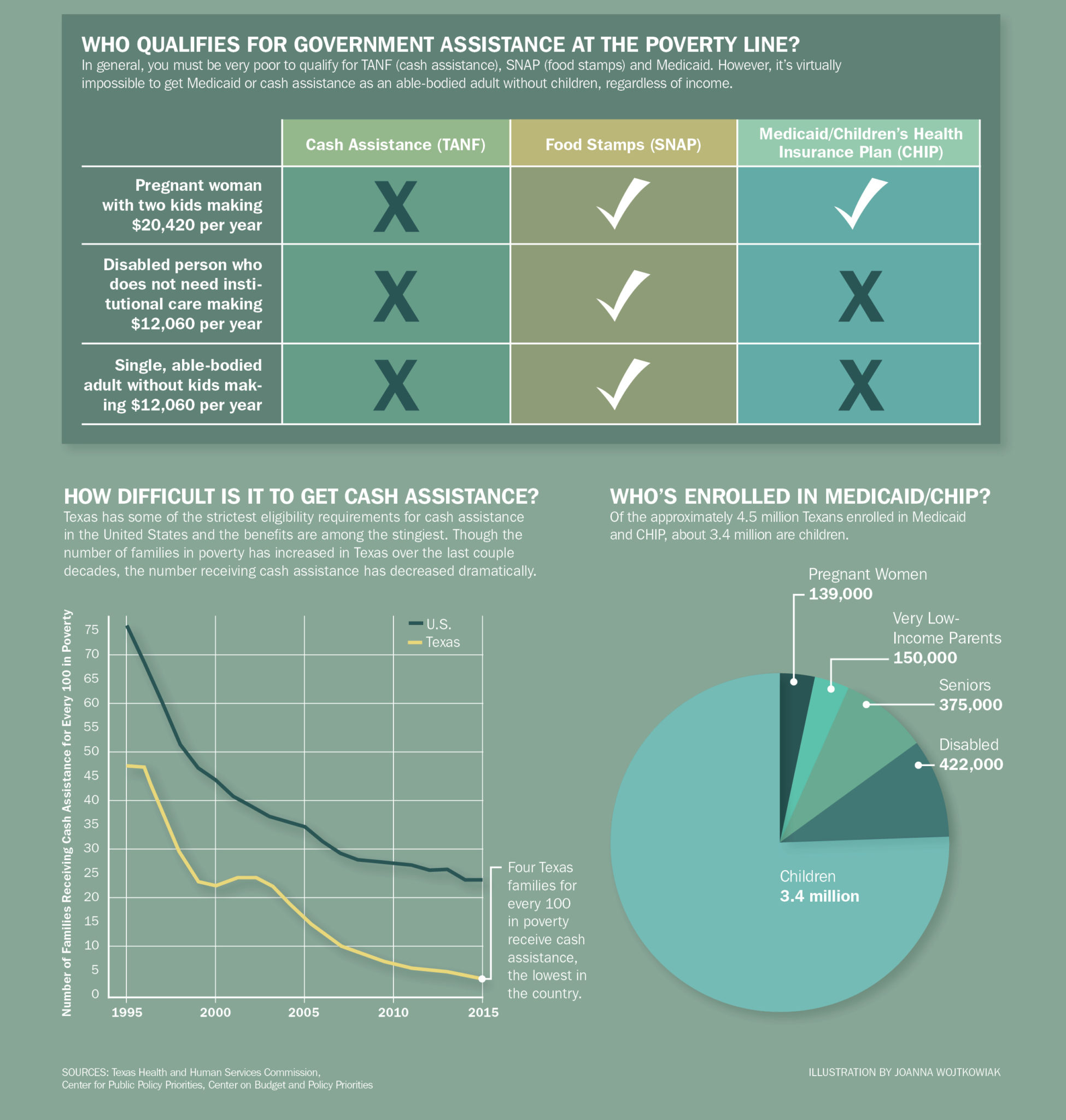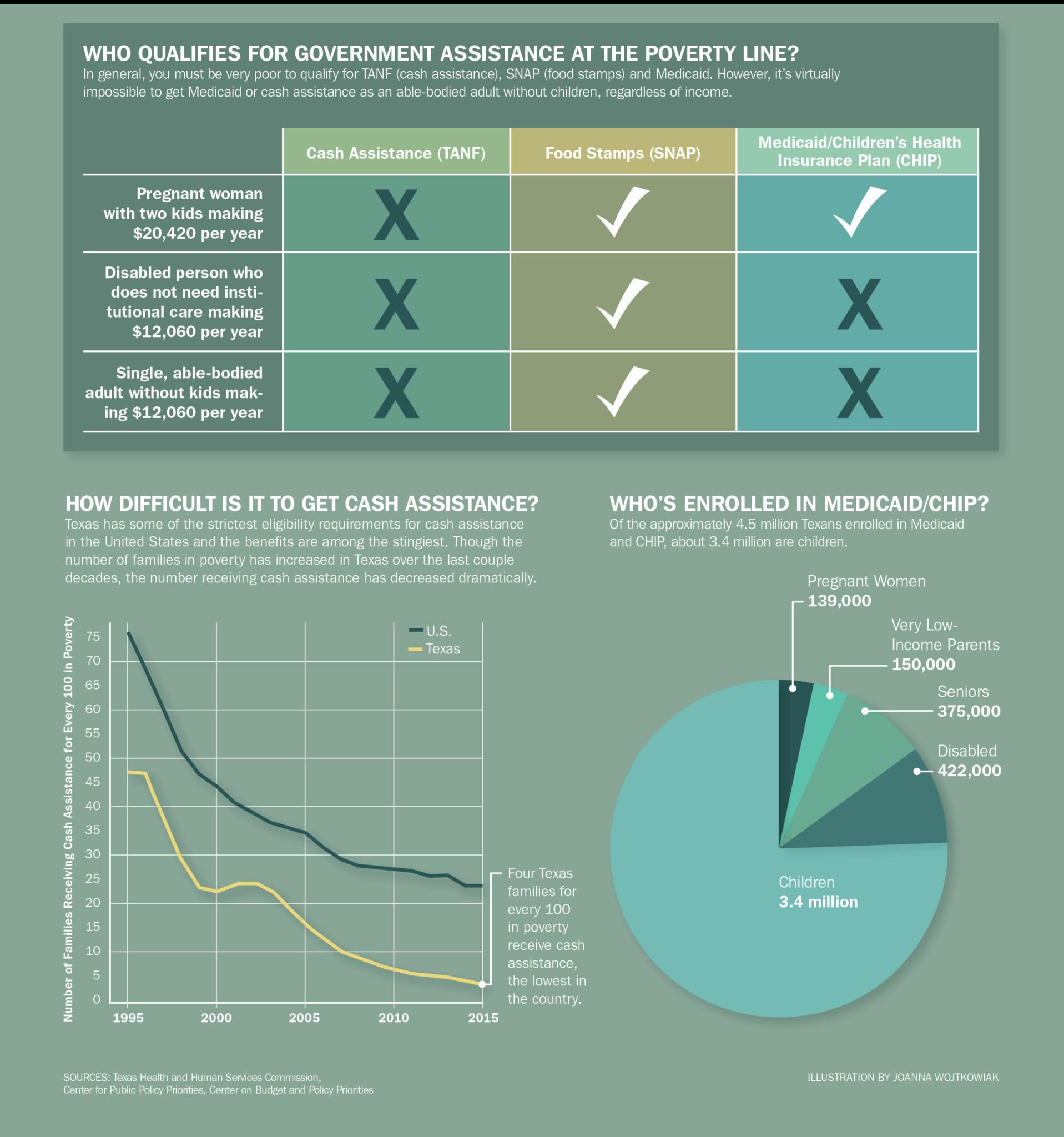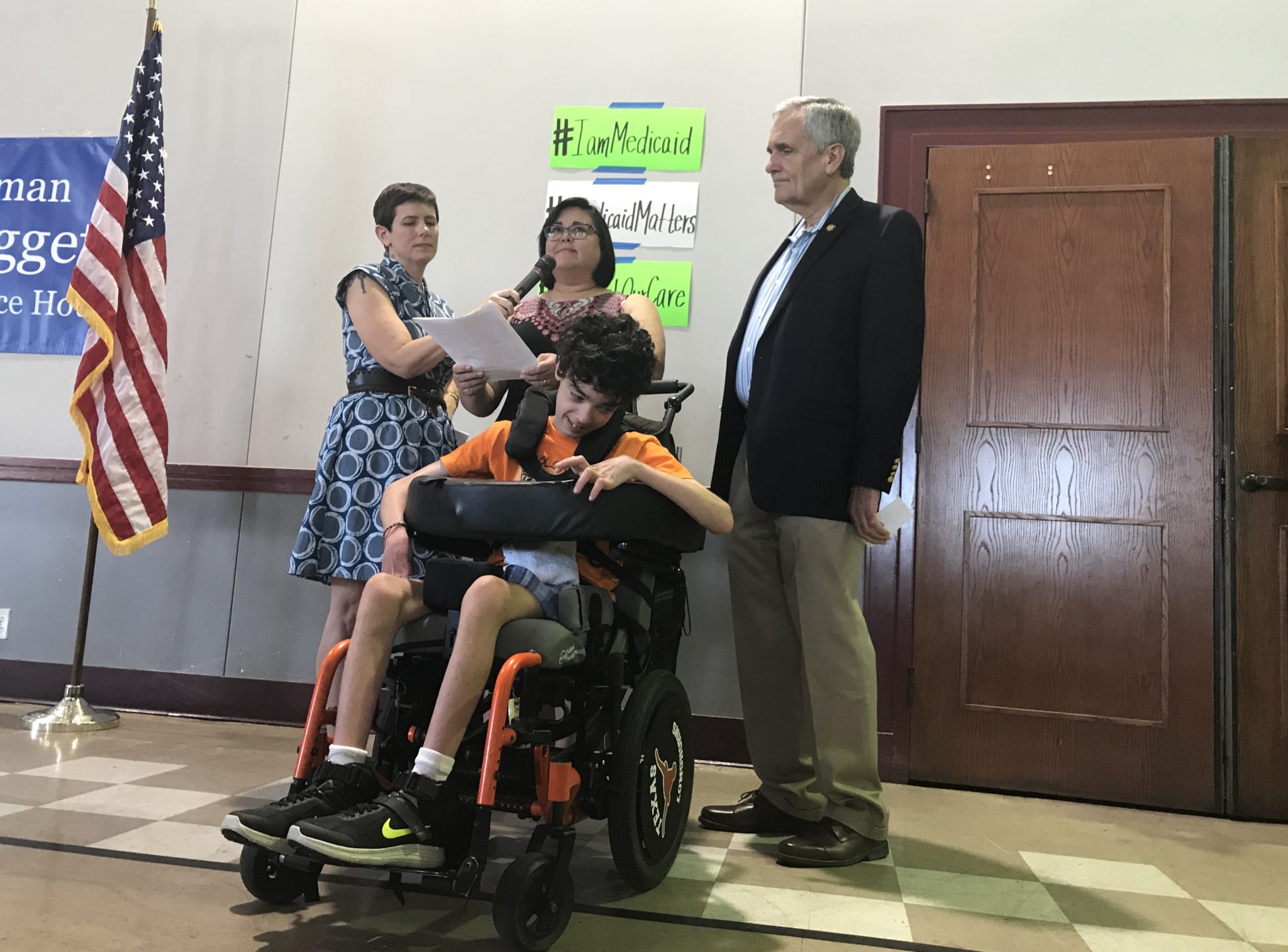
Who Really Gets Government Benefits In Texas?
It’s already difficult to qualify for Medicaid in Texas. The GOP health care plan would drastically shrink the program.


Texas already has some of the strictest eligibility requirements of any state for poverty relief programs. More than 4 million Texans live in poverty — about 16 percent of the state’s population — but programs such as Medicaid, the Supplemental Nutrition Assistance Program (better known as food stamps), and Temporary Assistance for Needy Families (aka cash assistance) are all but off-limits to able-bodied, childless adults, even those who are extremely poor.
About 3.4 million of the 4.5 million Texans currently enrolled in Medicaid or the Children’s Health Insurance Program (CHIP) are children, and Medicaid covers more than half of all births in Texas.
The program assisting the poorest, sickest and most needy Texans is facing an estimated $15 billion cut in federal funding over the next 10 years under the U.S. House plan. The proposal, which passed last month, would dramatically restructure the 52-year-old low-income public health program that covers about one-fifth of Americans.
Texas already struggles with the highest uninsured rate in the United States and the highest maternal mortality rate in the developed world.
The U.S. Senate health care bill — known as the Better Care Reconciliation Act and released Thursday — would cap the amount of money the federal government will give states for each enrollee, rather than leaving funding open-ended. Critics say that will likely lead to more limited coverage for fewer people — with kids, pregnant women, seniors, and people with disabilities bearing the brunt of the cuts.
The House plan would reduce federal funding for Medicaid by $834 billion over 10 years, according to the Congressional Budget Office. The nonpartisan agency said it will try to determine the full impact of the Senate bill by early next week, ahead of a possible vote before the July 4 recess.


